Scaffolding Companies Sallisaw
Find top Scaffolding Solutions in Sallisaw
Get multiple Scaffold Services quotes for your project today! Compare profiles, reviews, accreditations, portfolio, etc... and choose the best service.
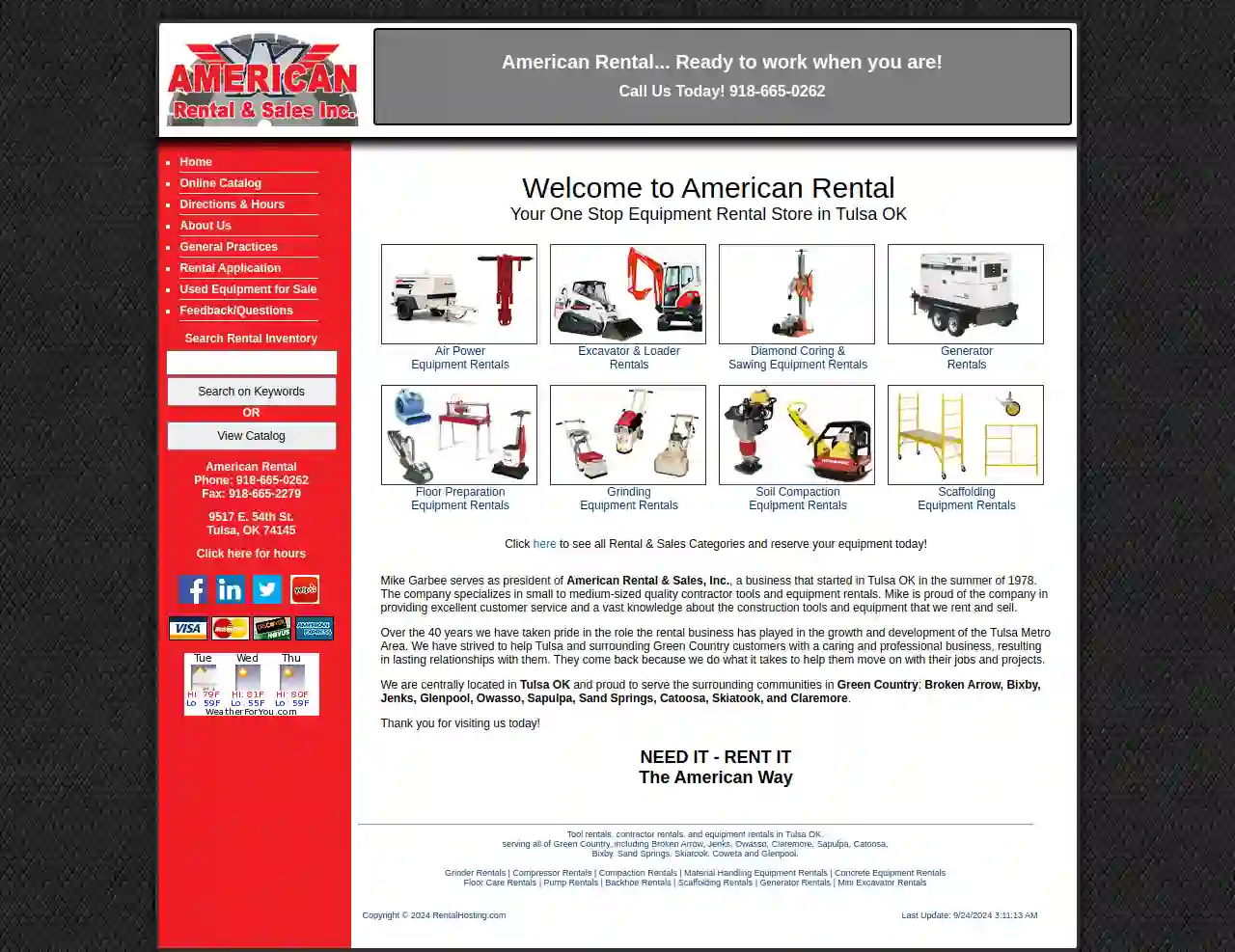
American Rental and Sales Inc
51 reviews9517 E. 54th St., Tulsa, 74145, USAmerican Rental & Sales, Inc. is a business that started in Tulsa, OK in the summer of 1978. The company specializes in small to medium-sized quality contractor tools and equipment rentals. With over 40 years of experience, they have taken pride in the role the rental business has played in the growth and development of the Tulsa Metro Area. They strive to provide excellent customer service and a vast knowledge about the construction tools and equipment that they rent and sell. They are centrally located in Tulsa, OK and proud to serve the surrounding communities in Green Country, including Broken Arrow, Bixby, Jenks, Glenpool, Owasso, Sapulpa, Sand Springs, Catoosa, Skiatook, and Claremore. They offer a wide range of equipment rentals, including air power equipment, excavator and loader rentals, diamond coring and sawing equipment rentals, generator rentals, floor preparation equipment rentals, grinding equipment rentals, soil compaction equipment rentals, and scaffolding equipment rentals. They are committed to helping their customers move forward with their jobs and projects, and they are proud of the lasting relationships they have built with their customers over the years.
- Services
- Why Us?
- Accreditations
- Our Team
- Gallery
Get Quote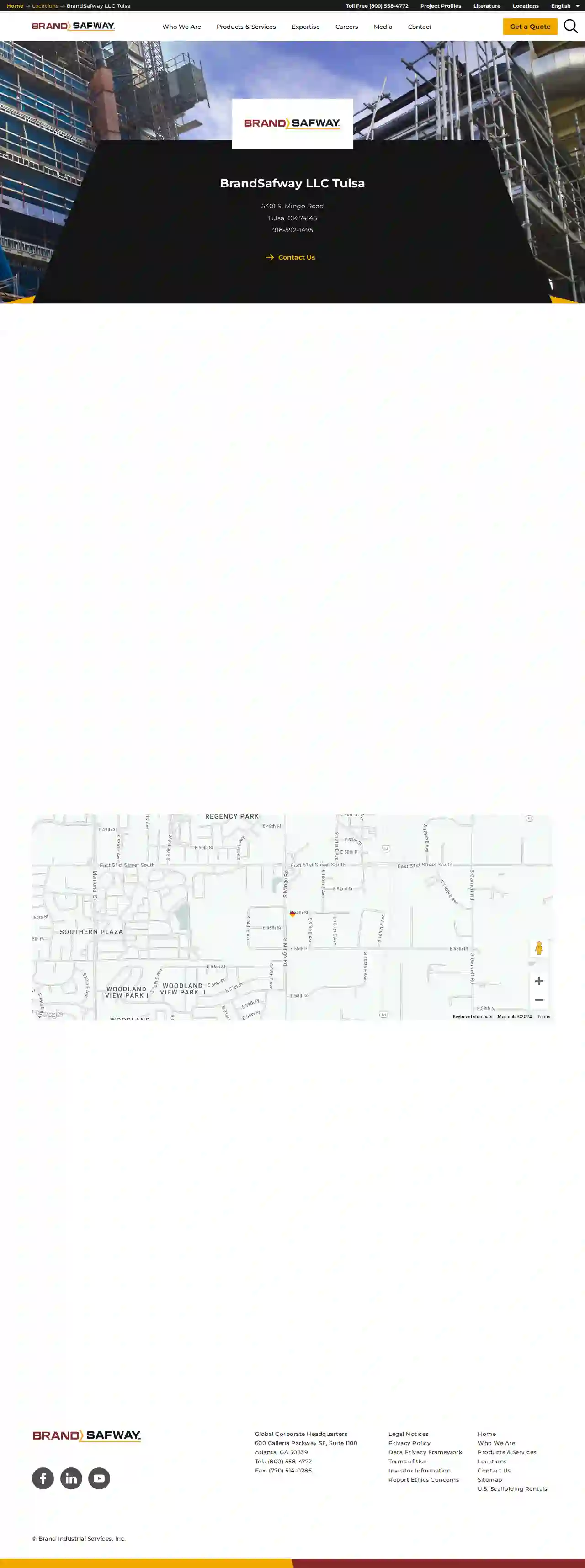
BrandSafway LLC Tulsa
4.413 reviews123 BrandSafway Blvd, Tulsa, 12345, USBrandSafway is a leading provider of access solutions, including scaffolding, aerial work platforms, and forming and shoring. With a strong commitment to safety, quality, and customer satisfaction, BrandSafway offers a wide range of services tailored to meet the unique needs of clients across various industries. Their team of experienced professionals is dedicated to delivering innovative solutions that enhance efficiency and productivity, ensuring successful project outcomes.
- Services
- Why Us?
- Accreditations
- Our Team
- Testimonials
Get Quote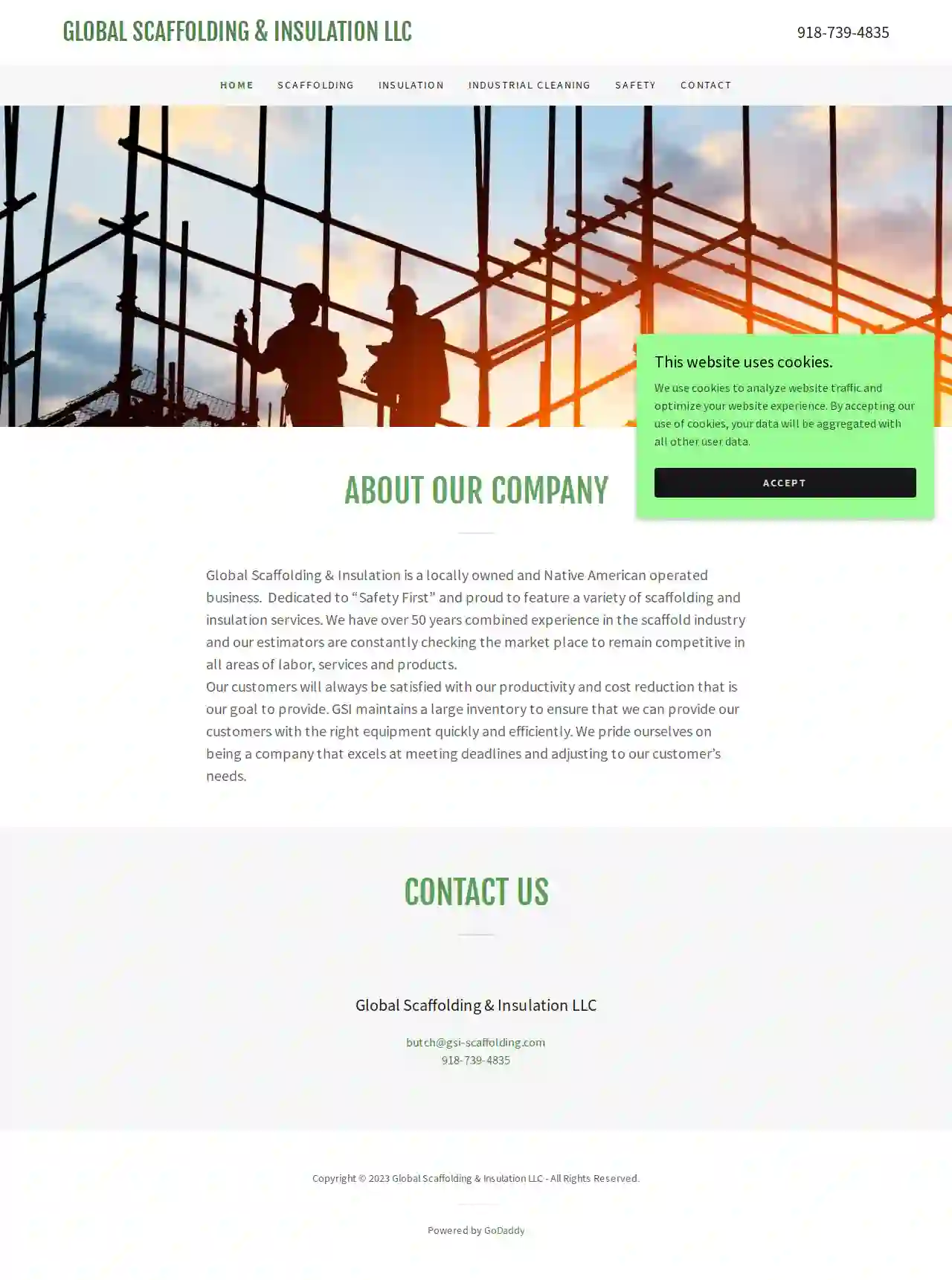
Global Scaffolding and Insulation
4.49 reviewsGlobal Scaffolding & Insulation LLC, 918, USGlobal Scaffolding & Insulation LLC is a locally owned and Native American operated business. Dedicated to “Safety First” and proud to feature a variety of scaffolding and insulation services. With over 50 years combined experience in the scaffold industry, our estimators constantly check the market place to remain competitive in all areas of labor, services, and products. Our goal is to provide our customers with productivity and cost reduction, ensuring satisfaction with our services. We maintain a large inventory to provide the right equipment quickly and efficiently, exceling at meeting deadlines and adjusting to customer needs.
- Services
- Why Us?
Get Quote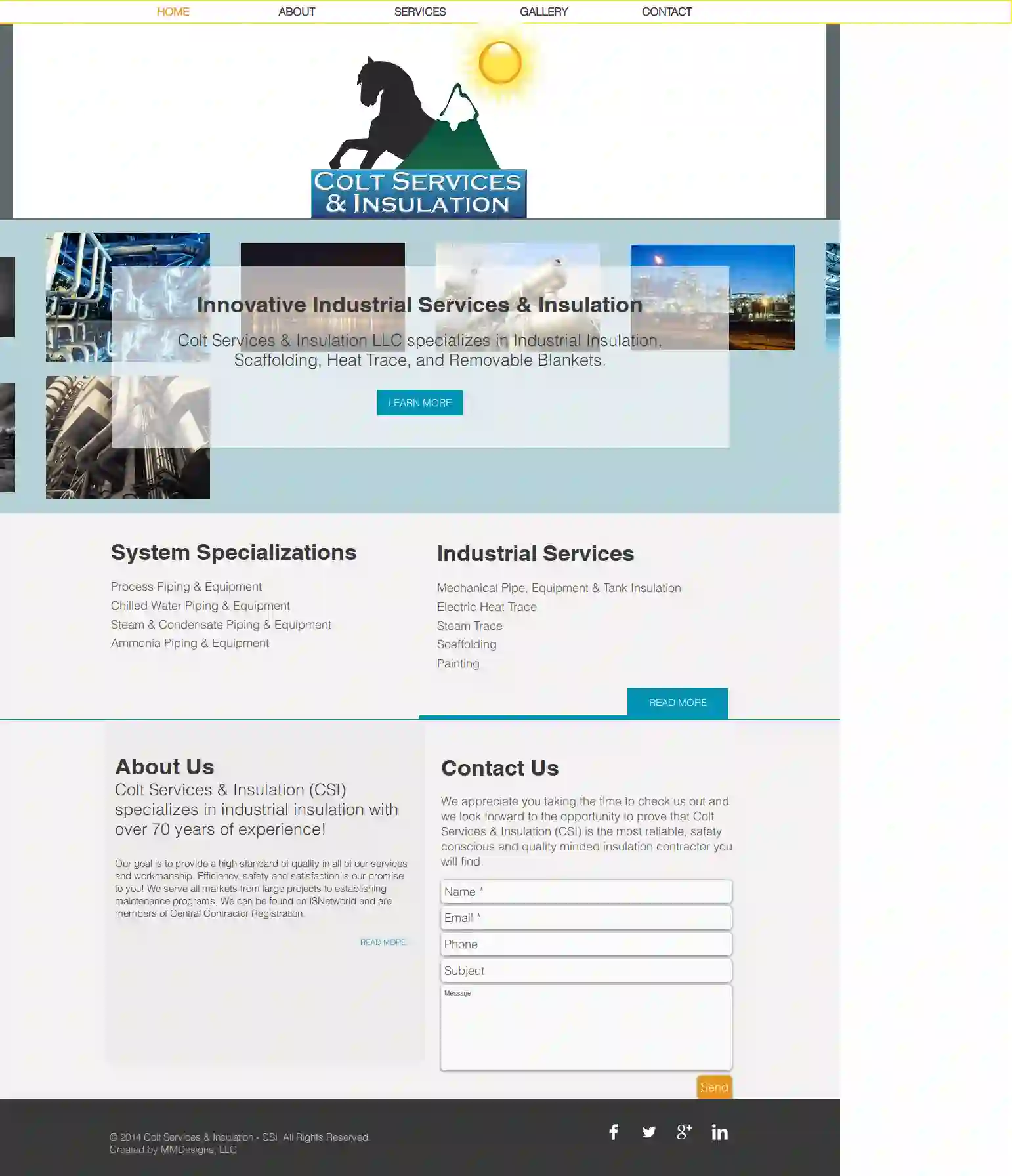
Colt Services
Tulsa, USColt Services & Insulation (CSI) specializes in industrial insulation with over 70 years of experience! Our goal is to provide a high standard of quality in all of our services and workmanship. Efficiency, safety and satisfaction is our promise to you! We serve all markets from large projects to establishing maintenance programs. We can be found on ISNetworld and are members of Central Contractor Registration.
- Services
- Why Us?
- Gallery
Get Quote
Thermal Insulation Pipe Solutions
4.84 reviewsTulsa, USAbout TIPS Plant Services With over 15 years of industrial and commercial insulation experience, we are the premiere choice for all of your insulation requirements. Ensuring that all jobs, no matter how big or small in scope, are finished on time and to the highest standards, all of the lowest prices possible, guarantees a stress free and budget saving environment for our clients. Established 2008 Clients More Than 500 Projects Completed Over 6287
- Services
- Why Us?
- Gallery
Get Quote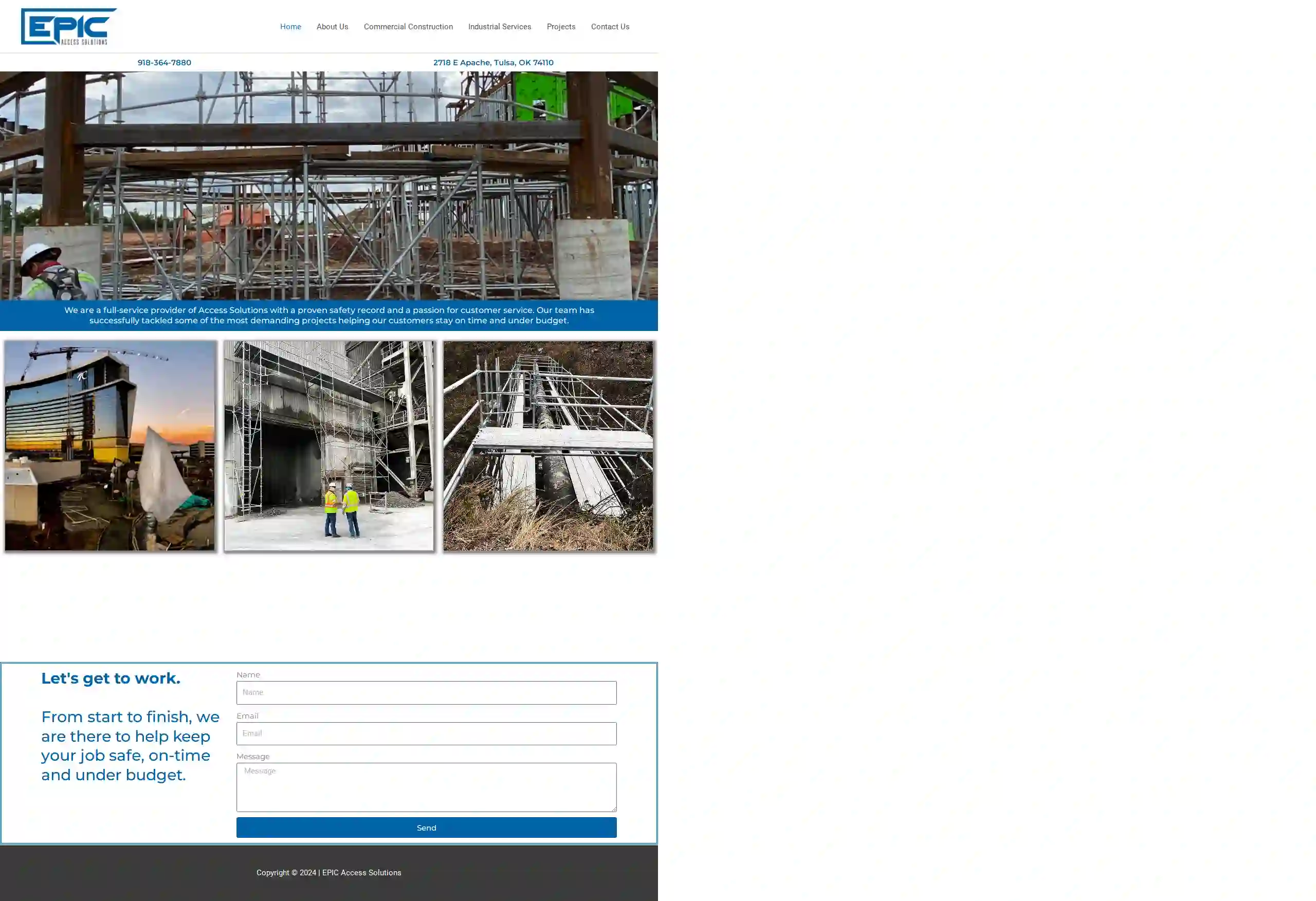
EPIC Access Solutions
4.25 reviews2718 E Apache, Tulsa, OK, 74110, USEPIC Access Solutions is a full-service provider of Access Solutions with a proven safety record and a passion for customer service. Our team has successfully tackled some of the most demanding projects, helping our customers stay on time and under budget. We specialize in Commercial Construction, Industrial Construction, and Civil Construction. Our commitment to safety is reflected in our excellent safety record and low EMR score. We are responsive, precise, and dedicated to making your job a success. From start to finish, we are there to help keep your job safe, on-time, and under budget.
- Services
- Why Us?
- Accreditations
- Our Team
- Testimonials
- Gallery
Get Quote- Su
Sunbelt Rentals Scaffold Services
4.442 reviewsTulsa, US- Services
- Why Us?
Get Quote - La
Ladders Of Tulsa
4.913 reviewsTulsa, US- Services
- Why Us?
Get Quote - Un
United Rentals
4.849 reviewsTulsa, US- Services
- Why Us?
Get Quote - Su
Sunbelt Rentals Scaffold Services
510 reviewsTulsa, US- Services
- Why Us?
Get Quote
Over 2,353+ Scaffolding Businesses onboarded
Our scaffolding companies operate in Sallisaw and surroundings!
ScaffoldingHQ has curated and vetted Top Scaffolding Businesses in Sallisaw. Find a top & trustworthy contractor today.
Frequently Asked Questions About Scaffolding Companies
- Experience: 'How long have you been in business, and what experience do you have with projects like mine?'
- Licensing and Insurance: 'Are you fully licensed and insured, and can I see proof of coverage?'
- Safety Record: 'What are your safety procedures, and how do you ensure worker safety on the job site?'
- References: 'Can you provide references from previous clients?'
- Quotes and Costs: 'Can you provide a detailed quote that outlines all costs, including materials, labor, and any additional services?'
- Project Timeline: 'What is the estimated timeframe for scaffolding erection and dismantling?'
- Communication: 'How will you communicate with me throughout the project?'
- Encroaches onto public property (sidewalks, roads): Permits are usually needed from the local council or highway authority.
- Exceeds a certain height: Scaffolding above a specified height often requires a permit.
- Is erected in a conservation area or near a listed building: Special considerations and permits may apply.
- A larger, more complex structure typically used for accessing multiple levels of a building.
- Offers greater height and versatility.
- Often used for construction, renovation, and maintenance.
- Smaller, portable platforms usually used for tasks at a single level.
- Commonly used for painting, plastering, or light repairs.
- Can be rolling or stationary.
- Mobile Elevated Work Platforms (MEWPs): Scissor lifts, boom lifts, and other MEWPs offer flexible access for specific tasks.
- Mast Climbing Work Platforms (MCWPs): Ideal for high-rise construction, providing a stable working platform that can be raised incrementally.
- Suspended Access Equipment: Ropes and harnesses used for specific tasks like window cleaning or façade repairs.
- Ladders and Step Ladders: For shorter durations and limited working heights, provided they are used safely and appropriately.
What questions should I ask a scaffolding company before hiring them?
Do I need a permit for scaffolding in the USA?
What is the difference between scaffolding and staging?
Scaffolding:
What are some alternatives to traditional scaffolding?
What questions should I ask a scaffolding company before hiring them?
- Experience: 'How long have you been in business, and what experience do you have with projects like mine?'
- Licensing and Insurance: 'Are you fully licensed and insured, and can I see proof of coverage?'
- Safety Record: 'What are your safety procedures, and how do you ensure worker safety on the job site?'
- References: 'Can you provide references from previous clients?'
- Quotes and Costs: 'Can you provide a detailed quote that outlines all costs, including materials, labor, and any additional services?'
- Project Timeline: 'What is the estimated timeframe for scaffolding erection and dismantling?'
- Communication: 'How will you communicate with me throughout the project?'
Do I need a permit for scaffolding in the USA?
- Encroaches onto public property (sidewalks, roads): Permits are usually needed from the local council or highway authority.
- Exceeds a certain height: Scaffolding above a specified height often requires a permit.
- Is erected in a conservation area or near a listed building: Special considerations and permits may apply.
What is the difference between scaffolding and staging?
Scaffolding:
- A larger, more complex structure typically used for accessing multiple levels of a building.
- Offers greater height and versatility.
- Often used for construction, renovation, and maintenance.
- Smaller, portable platforms usually used for tasks at a single level.
- Commonly used for painting, plastering, or light repairs.
- Can be rolling or stationary.
What are some alternatives to traditional scaffolding?
- Mobile Elevated Work Platforms (MEWPs): Scissor lifts, boom lifts, and other MEWPs offer flexible access for specific tasks.
- Mast Climbing Work Platforms (MCWPs): Ideal for high-rise construction, providing a stable working platform that can be raised incrementally.
- Suspended Access Equipment: Ropes and harnesses used for specific tasks like window cleaning or façade repairs.
- Ladders and Step Ladders: For shorter durations and limited working heights, provided they are used safely and appropriately.